Martin Simpson: "I played Jackson C Frank’s D-28. There were 20 middle-aged guys there, half of them were crying"
One of the finest fingerstyle guitarists working today on a chance encounter with a vintage Martin D-28, and more
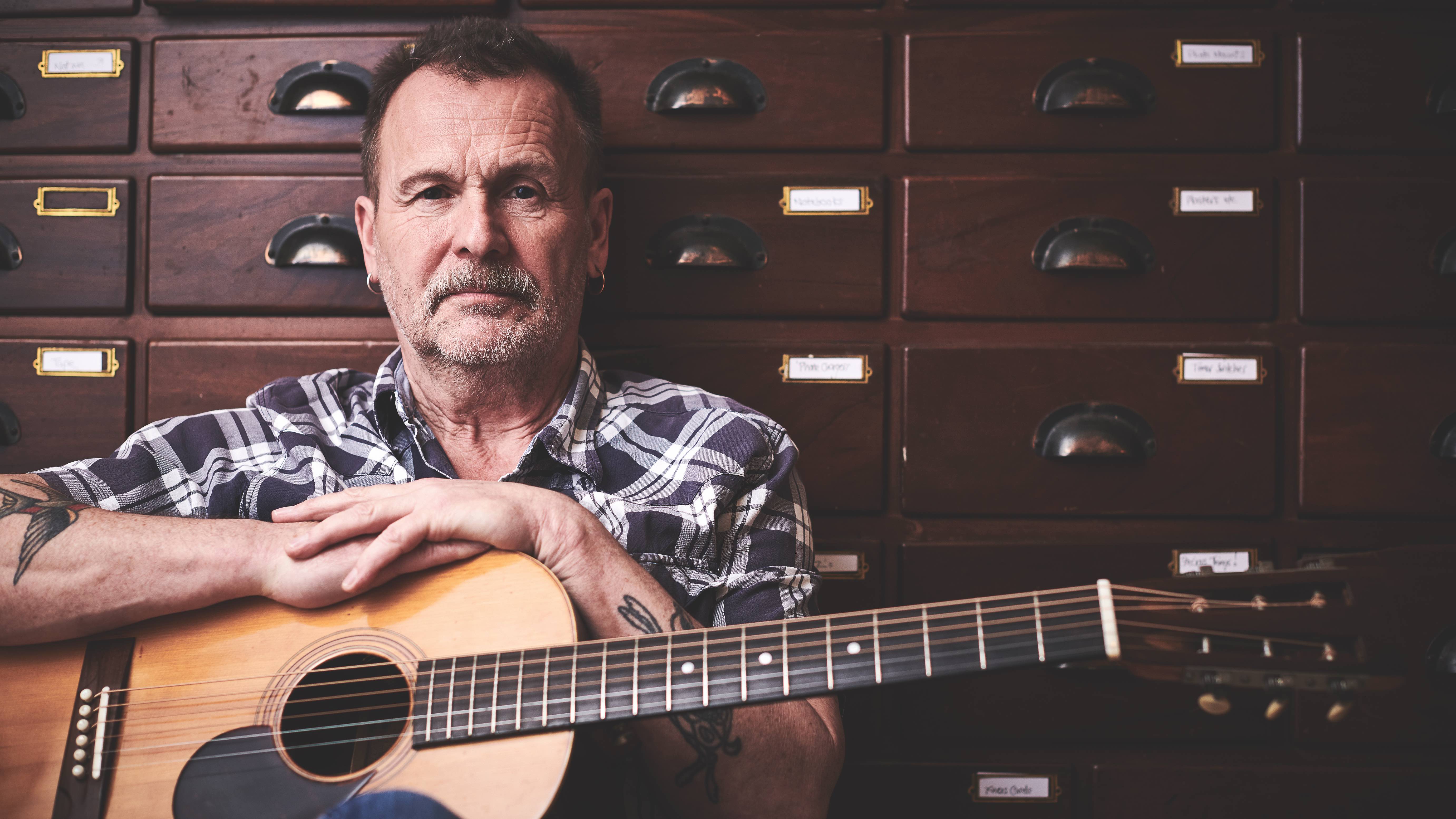
Martin Simpson is one of those players who is capable of transporting listeners with just a few notes, who invests every phrase with a haunting sonority that is, at times, not quite of this world.
It’s somewhat ironic, then, that he is one of the most down-to-earth musicians you could meet and, true to form, he’s invited us into his home in Sheffield to talk about his new album, Rooted.
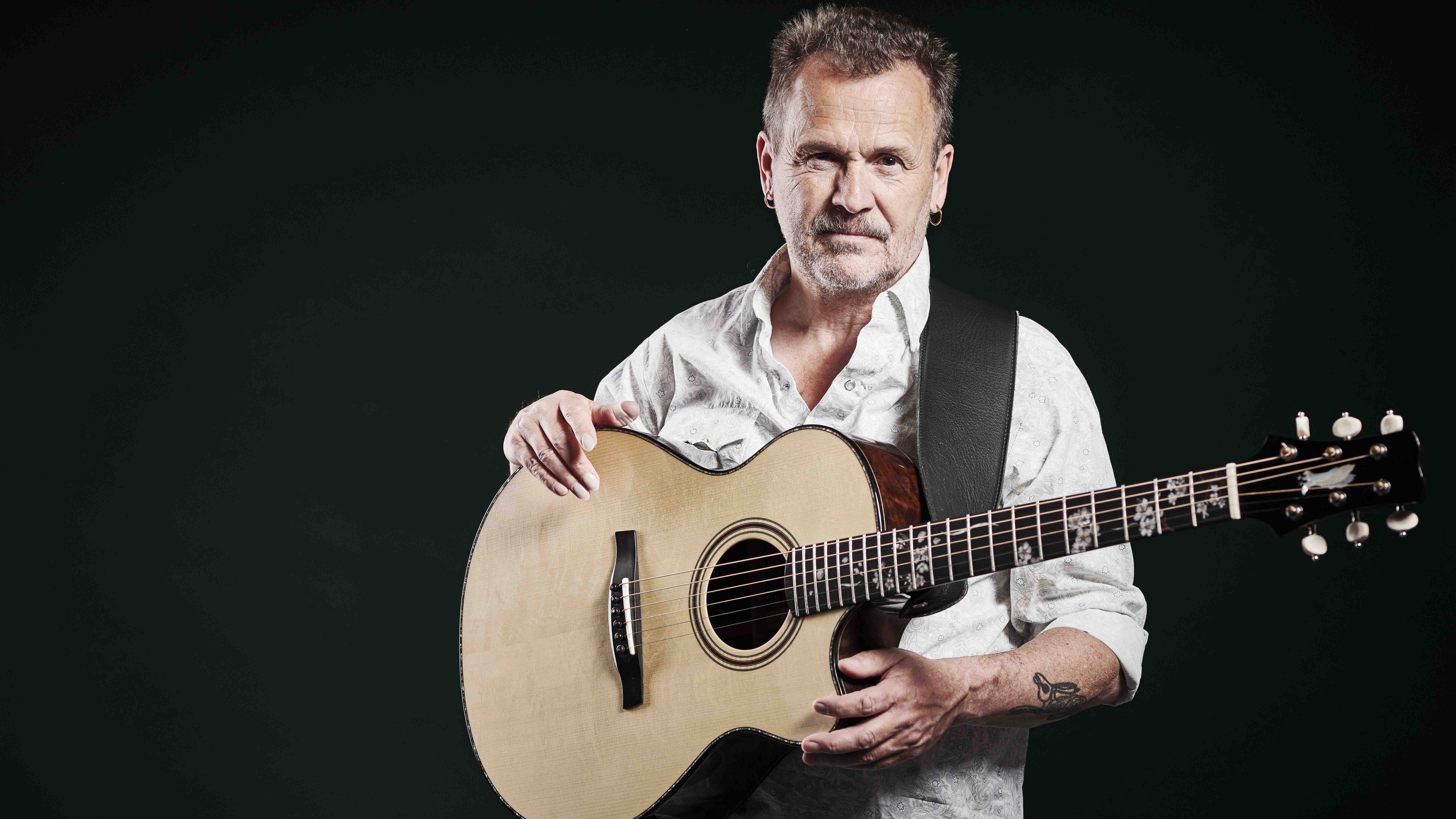
As the name suggests, it’s a musical journey back to the origins of Martin’s love for the guitar and the music made on it – and features some memorable guest appearances from the likes of Sheffield songsmith Richard Hawley who, handily, just happens to be Martin’s neighbour.
While we’re here, he’s also happy to show off his fascinating collection of acoustic guitars and banjos, including some pre-war Martin rarities that changed the way he thought about the guitar several decades into his career.
Along the way, he was able to share insights into his ability to coax extra sonority and musicality from the acoustic instruments he plays…
Tell us about your latest album, Rooted…
"I really wanted to try and make it a record that had more of my own material on it. Obviously, always there’s traditional music, which is constantly inspiring me, even when I’m not looking.
Get the MusicRadar Newsletter
Want all the hottest music and gear news, reviews, deals, features and more, direct to your inbox? Sign up here.
"One of these traditional songs will leap in there and I will just feel that I’ve got to do this. ‘This is such a remarkable piece of music, I have to briefly make it mine,’ which is I think what you do, when you do that kind of thing.
“I had a picture of what I was going to do and then [record label] Topic said, ‘You know what we’d really like you to do? We’d like you to make two records at the same time: one of which is a record of songs and the other is a record of instrumentals.’
The boiler exploded and 15 of his classmates were killed and he was really, really badly burned.
"You know that’s a really tall order. But what they said was, ‘In a sense, what we want you to do is, we want instrumental versions of what the other record is as well as individual new instrumental pieces, wherever they might come from.’
“You never really know when you start producing the material for a record which direction it’s going to go in. There were a number of things that influenced it. First of all, going back to the point of when I was promoting the last record [Trails & Tribulations], and one of those things was on the last record I recorded a version of Blues Run The Game, the Jackson C Frank song. And I would always tell the story of him and how the tragic accident that happened when he was 11 years old in the school classroom.
“Basically, the boiler exploded and 15 of his classmates were killed and he was really, really badly burned. During his recuperation, physical recuperation, he was given a guitar by the schoolteacher and he learned to do some folk songs and things like that, and he started to write.
"When he was 21, which was 1965, he came to England with $110,000 of compensation he’d been given, which he legendarily spent on booze, travel, vintage Martin guitars and sports cars when he got here.
It has an extraordinary amount of soul, that guitar. It really does.
"He made a big impression over here, particularly on the London folk scene – Les Cousins club and that kind of thing – and he made one record that was produced by Paul Simon who was also, basically, a struggling American singer-songwriter over here at the time. So he came over and made this one record, produced by Paul Simon, and he’d arrived with a bunch of really decent guitars.
“Anyway, I played The Stables at Wavendon and after the gig I was sitting there and, you know, signing CDs and chatting away to people. It’s a lovely part of the evening. This guy came up. He was quite shy and he said, ‘You know you were talking about Jackson C Frank’s guitars?’ I said, ‘Yes.’ And he said, ‘Well, I’ve got the D-28 that he recorded Blues Run The Game on.’ And it was one of those, ‘No – have you really?’ moments.
“He said, ‘Yes, I bought it in 1966 from Gerry Potter’s music shop at the bottom of Richmond Hill.’ I used to know Gerry really well. I knew the shop very well. Then he slayed me. He said, ‘I haven’t played it in 25 years. It’s under my bed. It’s too big for me, really.’ I went, ‘Ahh,’ [laughs] still trying to be casual about it.
"I said to him, ‘I’d really love to see it.’ He said, ‘Well, absolutely.’ He gave me his phone number and I made a point of not being in touch for a while. Partly because I wanted to think about it as well as not wanting to seem ridiculously keen, you know.
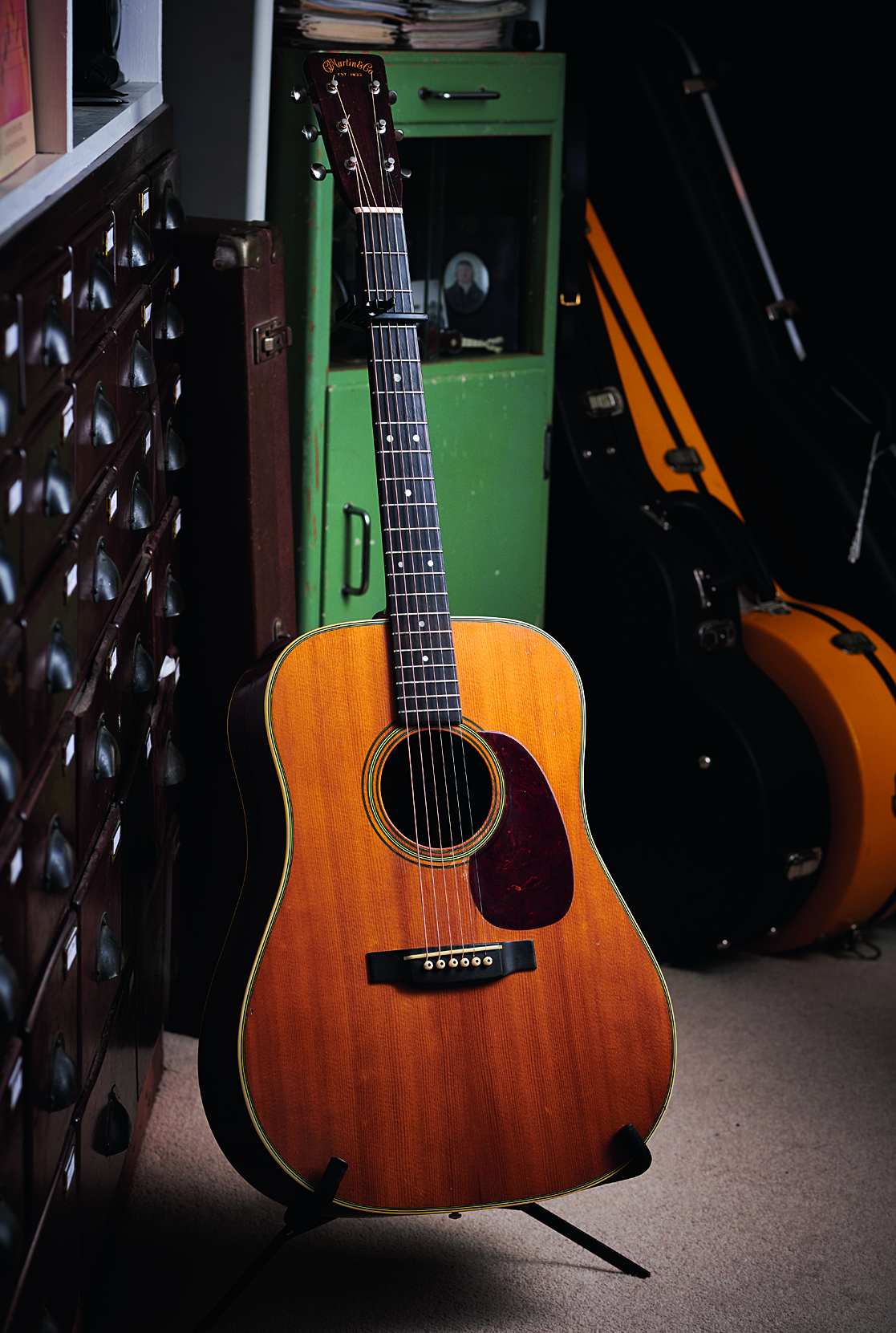
“So I went to see him and he wheeled the guitar out and it hadn’t been played for a very long time. It was a mess, but obviously a really fine guitar. I asked him if he would be interested in selling it; he said yes he would. He quoted a price that was a lot but then again not, considering what it is.
"In the case was the receipt, which said £250. So I said, ‘Well, £275 for cash right now.’ [Laughs.] Joking aside, I really thought about it and I thought I would love to own the guitar – but, actually, it was more than I had got floating around at the time and, anyway, I wasn’t that sure that the D-28 was going to be what I need to keep playing.
“So I got in touch with my friend Tony Werneke, who owns Replay Acoustics down in Kent. I said to Tony, ‘Look, Tony, I’ve found this guitar. I’m really happy if you’re interested in it, if you would like to buy it, but on the condition that I can use it on my next record.’ And so he said, ‘Yes, great.’ And he bought it and was delighted with it. It has an extraordinary amount of soul, that guitar. It really does.
“I think he did a neck re-set on it; it was routine maintenance that you would expect to do with a guitar at that age. It is in extraordinarily good condition. He’d traded it in. He looks like he probably bashed it on the edge of a table or something and it needed a repair. Not a massive repair but a repair, and he had to have a guitar he could play so he traded it in and that’s how Terry [the guitar’s longterm owner after Jackson C Frank sold it] got it.
“So I just let time go by and I said, ‘Right, I’m going to start recording. Can you send me the guitar up?’ and up it came. I’m really honoured to have had this guitar and to have had the experience of getting to know it a bit.
"When it first arrived, it was last November. And I had my guitar workshop, which I always run in Sheffield in November. I brought it into the workshop and I said what it was and then I played Blues Run The Game on it. There were 20 middle-aged guys there, you know.
"When I looked up at the end of it, half of them were crying. It’s a really special thing. It’s never happened before that I’ve come across something like that.”
You mentioned that D-28s are not necessarily your first choice. Did playing that guitar for a while kind of change your viewpoint on dreadnoughts generally?
“Well, as I was saying earlier, I didn’t used to like dreadnoughts until I was lucky enough to play some 1930s D-18s and they nearly killed me [laughs]. It was so great. This guitar is the closest. I really haven’t been a collector, ever, of vintage guitars. It’s not something that I wanted to do. I’m not bothered about having guitars for the sake of having guitars. I want a guitar that inspires me every time I pick it up.
“This guitar here is a 1931 000-18. I talked to Stefan Grossman about this guitar and I said that the thing that really fascinates me about this guitar if you look at it, it says, ‘Made in the USA’ on it. That means it was made for export. So this was one of 12 guitars that were ordered in 1931 by Boosey & Hawkes, or whoever was the distributor at that time.
“So they all came straight to England, which means that this guitar has not been subject to the extremes of American weather – so this guitar actually is in incredible condition. There’s not got a single crack on it. It’s incredibly expressive. It’s bonkers. It’s really incredibly in tune as well. I can play anything on this guitar. It’s so comfortable, the whole scale of the thing. The dreadnought [by comparison] is big and square and it’s not anything like as comfortable for me to play. But this has been a complete game-changer for me, you know?
“Not everybody loves it. Stefan Sobell came over and he really was taken with the D-28. He thought it was a great guitar. Not so much with the 000-18, though, whereas Rory Dowling of Taran Guitars came over and I showed him the D-28 and a few other guitars and, at the end, when we’d played everything in the room just about, I got the 000-18 out again and I played it to him, and he just hung his head and he said, ‘I never want to hear that again, because it bamboozles me. I don’t understand how that guitar is what it is.’ Because it is remarkable. It’s really remarkable.”
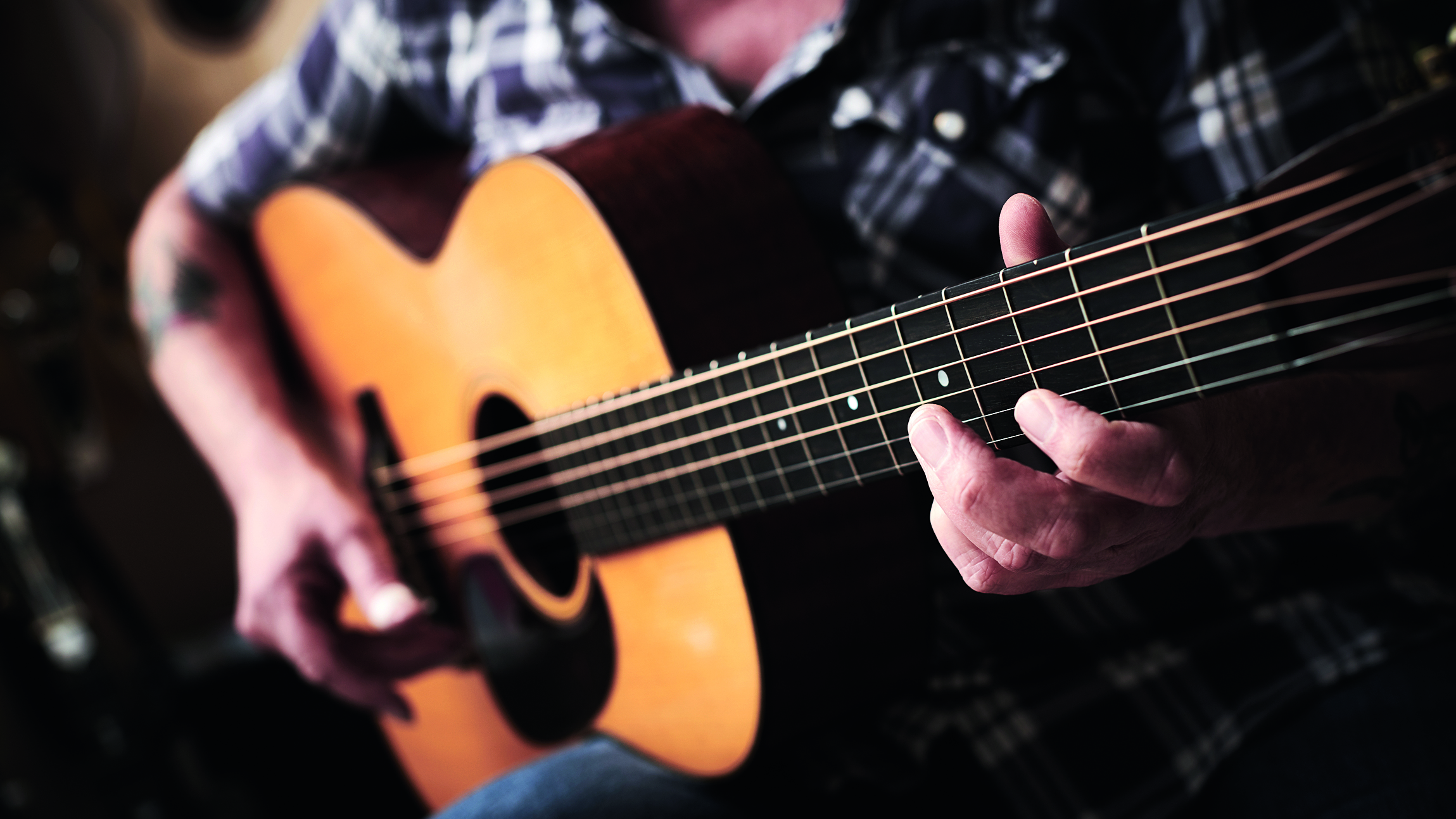
You mentioned that when you started out, dreadnoughts didn’t feel like a good fit with your style. What was your path to finding guitars that you did like?
“Well, you didn’t have a lot of choice. When I was 14, I sold my bike in order to raise money for my first steel-string guitar because it was £38. It was a Harmony Sovereign , which is enormous. In fact, my father-in-law, Roy Bailey, died last year and he has left us his Harmony Sovereign. I absolutely love having it, you know, but when I think about how small I was when I first started to play… it was like, ‘Whoa,’ and I played that and I got on great with it for a while.
“Then I think the guitar that replaced it was a Guild F-20, which is tiny. There weren’t a lot of them about. I remember showing it to various people on the folk scene, and they said, ‘Wow, it’s like one of those little Martins. I didn’t know they did that.’ Because Guild were known for big dreadnoughts, you know? And Jumbo F-30s and things like that, too. But the F-20 was a tiny little thing.
“So I had that Guild F-20 and then that went as a trade on a Gibson J-45 and then the Gibson J-45 went as a trade on a new 000-18 and that was in 1972. At that point, I was thinking, ‘Yes, this is how it is.’
“Then I got invited to Algeria – which was the first time I’d ever been out of the country – to go and play a gig by some folky friends of mine who were on an oil installation in Algeria. So I went out there and on the way back everything I owned was stolen. So the guitar, my banjo and all my clothes were stolen. The only thing I got back was the banjo [laughs]. Which I think is ironic. It was like the thieves went, ‘What’s the point in keeping this?’ But the 000-18 went and I just felt like I’d got to a point where I didn’t want to go and buy another new Martin.
“In the end, what happened was that I saw this guy down in Kent called Peter Abnett and he was hand-making instruments. The thing that actually sold me on him is I saw an autoharp that he’d made. You know, autoharps are crap, in terms of quality, generally speaking. But this thing was so beautiful. It was amazing. So I thought, ‘Well, if he can make an autoharp like that, imagine what he could do with a guitar.’ And so he made me what was effectively a pretty fancy OM and that was my guitar for a long time. I recorded a lot of stuff on that.
Rex was an old fella. He played a million chords in standard tuning. He just thought capos were the work of the devil.
“That set me off on the idea of having a relationship with guitar builders. It was, like, ‘Oh, okay. You can talk to these people.’ And you can get what, to my opinion, is a superior instrument. And at that point it wasn’t a great deal more than buying something off the wall, you know?”
As a fingerstyle player, what specific features do you look for in a guitar?
“Width. Space for both hands, you know? The D-18 actually wouldn’t normally hold my attention because it’s narrow. It’s kind of industry standard, but I really like guitars where you’ve got a lot of room for the right hand.
“When I had the [Martin Simpson Private Stock Acoustic] PRSes developed, they sent me prototypes and I said, ‘Right, okay. It’s great, except it really isn’t wide enough.’ They sent me a slightly wider neck and I said, ‘You know what? It’s still actually not quite right.’ Eventually, they sent this guitar here – and if you look at the width it’s got a lot of space. Endless space for your fingers, totally different voice. It’s just a great all round guitar.
"I keep saying to PRS, ‘Why don’t you make an SE acoustic with a wide neck?’ You know, because I think those SE acoustics they are making are brilliant for the price. I think they’re astonishing. I very cheekily had a 1950s DeArmond Soundhole pickups installed on it…”
What do you like about those? What do you think that pickup sounds like with an acoustic guitar?
“It puts you halfway to playing electric guitar. It’s a very particular voice. Nobody’s making anything like that nowadays. I’ve got three of them, actually. I’ve got one in here, one in the Fylde and I’ve just got another one from Tony. They’re all just slightly different models and, well, if it’s good enough for Lightnin’ Hopkins and Elmore James, I’ll have a go!
“All my acoustics that I play on stage have got Highlander iP-2 and McIntyre Acoustic Feather pickups in them. The saddle transducer and the bridge plate transducer run stereo into a preamp and it’s a fantastic sound and it reflects the guitar. They sound like the guitar.”
People over here refer to ‘Jazz Nazis’. Well, in the States, they talk about Blue Grassholes.
You’ve been a real advocate for the guitars of high-end maker Stefan Sobell. What is it that keeps you coming back?
“One of the things that I admire so much about Stefan is that he has completely ploughed his own furrow, you know? We were talking about how influential Martin guitars are. For Stefan, when he was a youngster and playing folk music, he found a Martin C1, which is a round-hole archtop Martin. Very unusual thing to find. He also came across Gibson mandolins and Portuguese guitars.
"He repaired Andy Irvine’s various instruments, and he was on the road with Gibson mandolins and Portuguese guitars and so he went, ‘All right, I’m going to build these instruments.’ So he was making mandolas, citterns, things of that nature.
“Then, in about 1980, he went, ‘I think it’s time I made a guitar,’ and so he made an archtop. It was a fantastic thing. He always said, ‘There’s no point in making flat-top guitars’ [laughs].
"So I’ve always thought that his guitars have a voice that is unlike any other. I’ve actually recorded more on Sobells than anything else over the years. But then, you know, you get the opportunity to work on developing other guitars and I really couldn’t turn it down.
“I think these PRSes are amazing guitars, for example. And what I was going to say about the 000-18 earlier is, it just made me want to investigate the possibilities, you know, of working with various builders on 12-fret [to the body] guitar.”
Tell us what it is you like about 12-fret acoustic guitars…
“Actually, it’s the sound first, but then it’s an incredibly ergonomic little beast for me. I talked about the 000-18 and then this thing turned up. And this completely blew my head off [picks up one of the guitars on display on the wall]. It’s a Washburn. It’s called the 1897 New Model.
"So it’s a 120 years old, almost. It’s a tiny little thing. It was bust, but it’s been repaired by a guy called Kai Tönjes. He’s German. Lives down in Kent. It’s just ridiculous. You know, it’s just a great, great voice. So this and the 000-18 just made me want to talk to people about making 12-fret guitars.”
Moving on to tunings, you work in a wide variety of tunings. Do you have a particular favourite that defines your sound to any degree?
“No, not really, because I think all of them are actually really quite versatile. A lot of it’s down to the pitch of singing. I accompany myself and I’ve always accompanied other people. I’m in A at the moment, but it’s fabulous for playing in Bb. Or you can tune it up high and capo it up high. It’s like having a different instrument each time.”
Is a capo an essential bit of kit for you?
“It’s just a great tool. It always makes me laugh… When I was a kid there was a dance-band guitar player that lived in our town called Rex, and Rex was an old fella. He played a million chords in standard tuning. He just thought capos were the work of the devil. I went back and I played a gig… this would be probably 15 years ago, or something like that. So I went back and played at the Civic Theatre in Scunthorpe. The Plowright Theatre it’s called now, after Joan Plowright.
“Anyway, this friend of mine promoted the gig for me and he saw Rex in the street and by this time he was probably in his 80s or something, I suppose. He said, ‘Now then Rex, Martin Simpson’s playing at Plowright. Are you going to come along?’ and he said, ‘I’m fucking not. He was a cocky little c***. I hated him.’ [Laughs.]
“But I think [with] the combination of the tunings and the capo and all that kind of thing, it allows me to relate the guitar back to the banjo really beautifully. It gives me a voice, you know?”
Are you reluctant to use standard tuning, given the range of alternatives open to fingerstyle acoustic players?
“No, not at all. I did this project with Don Fleming, formerly of the Carolina Chocolate Drops, where we sort of looked at the relationship between English and American music – how it cross-fertilised and all that kind of thing. It was great because this project allowed me to look at bits of my repertoire that I haven’t looked at it in years, and one of the things was accompanying him in standard tuning. I was playing Henry Thomas ragtime pieces, you know? Peg Leg Hal pieces… and all of that required me to play in standard tuning.
“I actually really, really enjoyed it and so on the new record, there’s one piece that comes from me sitting around exploring the ragtime stuff because of having worked with Don Fleming.”
Do you have perfect pitch?
“No, I have very good relative pitch and I’ll use a visual tuner if I’m on stage and I can’t hear clearly. Otherwise, I hate them. They lie. I’d sit sometimes and be looking at the tuner and it will be telling me it’s in tune, and I’m going, ‘No, it’s not. I know it’s not,’ because my ears are telling me it’s not.
“I always say to my students, ‘Actually, you’ve got to be very careful because your eyes, they override your ears.’ So if you use a visual-display tuner to tune, you’re basically wasting your ears. So I don’t. I retune all the time. I like it. It’s part of what I do. Once you’re there…
“Anyway, to go back to the ragtime piece on the new album, I was sitting around playing, in standard tuning, and I was playing an old ragtime tune. It just popped into my head. It’s called Ragtime Millionaire. We got to the chorus and I thought, ‘Whoa, I’ll have to remember that.’ And then I suddenly thought, ‘Wait a minute, wait a minute.’ So I wrote a set of words for it.”
When you were starting out in guitar, did you start with blues or folk or were you just kind of a magpie picking up anything and everything that took your interest?
“I spent my entire youth being told, ‘You can’t do that. You’ve got to make up your mind what it is that you want to do.’ Because I would play everything. Sometimes, I wanted to be an elderly black man from Mississippi or Earl Scruggs. Sometimes I’d want to be a ballad singer from Scotland or an Irish piper… Because, actually, it all just felt like part of the same thing.
“I’ve always said – I just actually read Billy Bragg’s book about skiffle [Roots, Radicals And Rockers, 2017, Faber], which is a really well written book. He talks in it – he alludes at one point to the idea that skifflers invented Americana.
“I used to say, jokingly, that when I was a kid, you know, I was playing blues and I was playing English traditional songs and it all felt like part of the same thing. When I went to the States, I realised that, actually, and what I used to say jokingly was, ‘I invented American folk music,’ because that’s what it is. It’s a mixture of white Anglo-Saxon and what-have-you music from Great Britain and African-American music and all the other stuff that’s in there.
“But it is this really broad palette. At one end is unaccompanied singing from the UK and at the other end is, you know, slide guitar. Who knows, but it’s all the same thing. You can take things from anywhere on that palette and use it how you want as far as I’m concerned. So, yes, I tried to pick what moved me out of all that and it’s still what I do.”
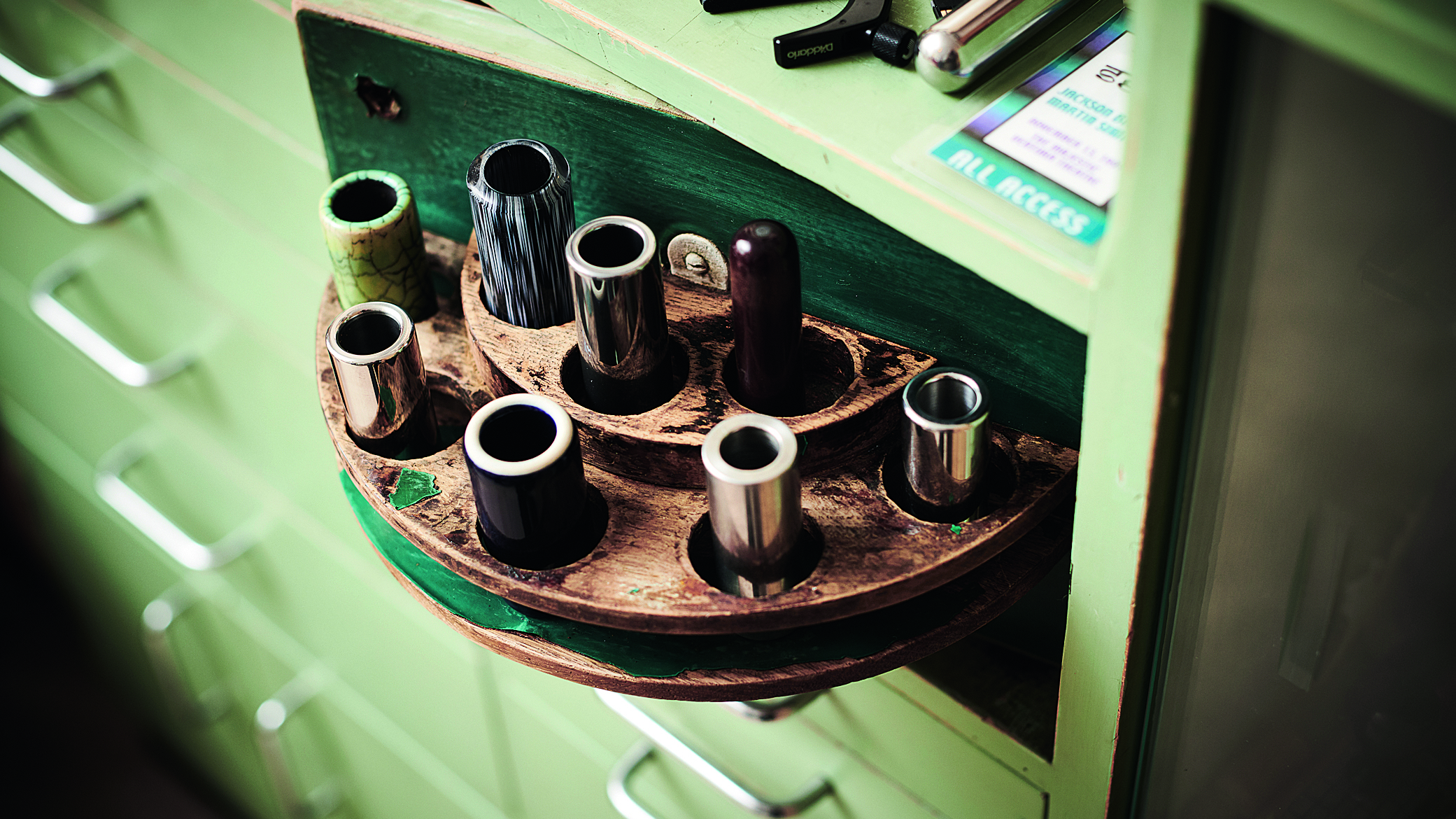
Do you think, as guitarists, we’ve become kind of a little bit too inclined to put things in pigeon holes?
“I think there’s always a danger when you get people’s enthusiasm for specialist music, you know. Like the whole kind of brawling in the 50s in the jazz scene between trad players and the more progressive jazz musicians. In the States, there’s a lot of that.
"There are a lot of people who are purists, you know. People over here refer to ‘Jazz Nazis’. Well, in the States, they talk about Blue Grassholes [laughs], which are players who don’t want to change anything about bluegrass music because, ‘No, it’s got to be like Earl [Scruggs] did it,’ and that kind of thing.
“But I think, ultimately, it’s down to you to just say, ‘No, stuff that, I’ll do what I want to do.’ I think people see, nowadays, in the circles that I move in, that actually you can utilise whatever aspect of all this fantastic music you want to utilise if it works for you. Sometimes people do it and it doesn’t work. Sometimes people do it and it absolutely does and it’s brilliant, and you go, ‘Oh wow, I wish I’d thought of that.’
“I was really fortunate. I grew up in a hard industrial town in the 60s, but there were these people around like Paul Empson who I talked about, who were just obsessed with the instrument – and they were all older than me.
"There was a guy who lived round the corner from me and he was a real stoner and he’d just get absolutely ripped and he would sit with a guitar with eyes like that. And he would play and I’d just go, ‘Wait a minute, wait a minute, I’m having that.’ You know. All that business, from watching this guy who was off his head.
“And so I was really fortunate that I had these kind of sonic experimenters around me in peculiar places. And because of having these different instruments to play with – banjos, and all kinds of mad stuff – I could always hear possibilities in all the instruments and it constantly cross-fertilised and continues to cross-fertilise. I never get tired of just sitting around and seeing what can be done with the note.”
Rooted is out now on Topic Records.
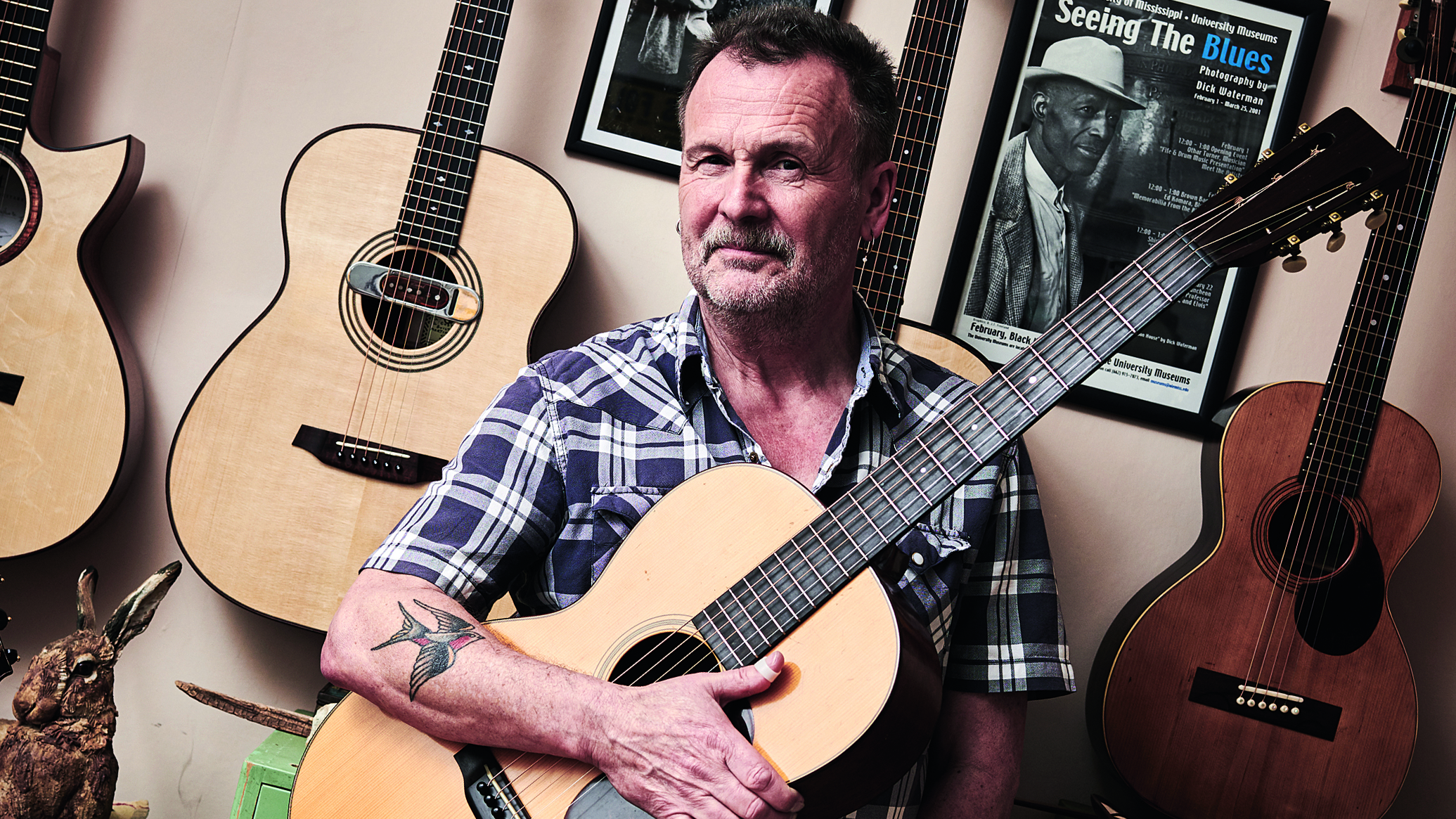
Jamie Dickson is Editor-in-Chief of Guitarist magazine, Britain's best-selling and longest-running monthly for guitar players. He started his career at the Daily Telegraph in London, where his first assignment was interviewing blue-eyed soul legend Robert Palmer, going on to become a full-time author on music, writing for benchmark references such as 1001 Albums You Must Hear Before You Die and Dorling Kindersley's How To Play Guitar Step By Step. He joined Guitarist in 2011 and since then it has been his privilege to interview everyone from B.B. King to St. Vincent for Guitarist's readers, while sharing insights into scores of historic guitars, from Rory Gallagher's '61 Strat to the first Martin D-28 ever made.
“Every note counts and fits perfectly”: Kirk Hammett names his best Metallica solo – and no, it’s not One or Master Of Puppets
“I can write anything... Just tell me what you want. You want death metal in C? Okay, here it is. A little country and western? Reggae, blues, whatever”: Yngwie Malmsteen on classical epiphanies, modern art and why he embraces the cliff edge












